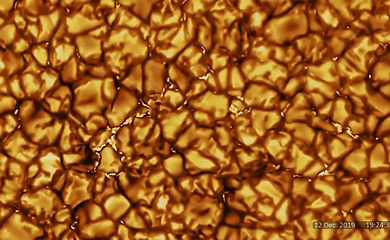
Physics Stuff
Odds and Ends for the Classroom and Beyond
Some answers, useful resources and more questions.

Sacrificing Principles for Laws on Alter of a Causal Space-Time
Ideas from Classical (as opposed to quantum) theory of Fields are developed from Newton through Maxwell to Einstein. We will spiral around these ideas gradually drawing in the more technical language and arcane conceptual frameworks needed to unpick them in depth.

A Red-shifted Classical Natural Science history lesson
We go from the super-luminously interacting systems of point particles of Newton, the elapsing causally field connected worlds of Einstein and Maxwell to a world of disparate but correlated systems knitted together as quantum entangled states that are though separate Islands of unshakable knowledge that result from the uncertainties of Heisenberg.
Einstein's declaration of equivalence of freely falling frames and Gravity
Einstein's re-interpretation of (the force of) gravity as equivalent to being in an accelerating frame of reference unifies all types of observers (of an experiment) be they accelerating, constantly uni-directionally moving or static. That is, they all (naturally) observe (i.e. measure lengths and times with an idealized, co-ordinated set of rulers and clocks) the same event though the equations of motion they use to describe it will differ between them.
Einstein's Theory of the Metric
The force concept, as a ("pushing along") differentially changing potential ("hills and valleys") is subsumed in Einstein’s Theory by a continuous defined ("metric") field that encodes vector length elements at all points throughout space-time. Newton's three Laws of inertial-earthbound notion of resistance to motion are harmonised with his (astronomical) Law of Gravitation
Maxwell's Unification through Faraday Fields
Quantum Entanglement of Correlated systems
Rub between Chaos and Entanglement.
The (point-particle) mechanics of Newton was unified with the (wave) optics of Huygens and Young's in Maxwell's equations of Faraday's contiguous fields. The fields provided continuity and connectedness between distant but interacting particles.
We are no longer impassive observers in a Quantum Wolrd, but rather active probers when we experiment with our system of clocks and rulers (systems of photon laser beams that trigger signals, that reflect back into our eye, that create recoil imparting momentum etc) on the microscopic systems of the Quantum world.
Quantum entanglement phenomena jars with a Reductionist program that at heart is seeking to factor or reduce composite systems into their primitive explanatory roots. Between the synergetic obscurity of not knowing the within of Quantum entanglement to the non-clockwork determinism within the complexit of Classical Chaos is the Superposition Principle.